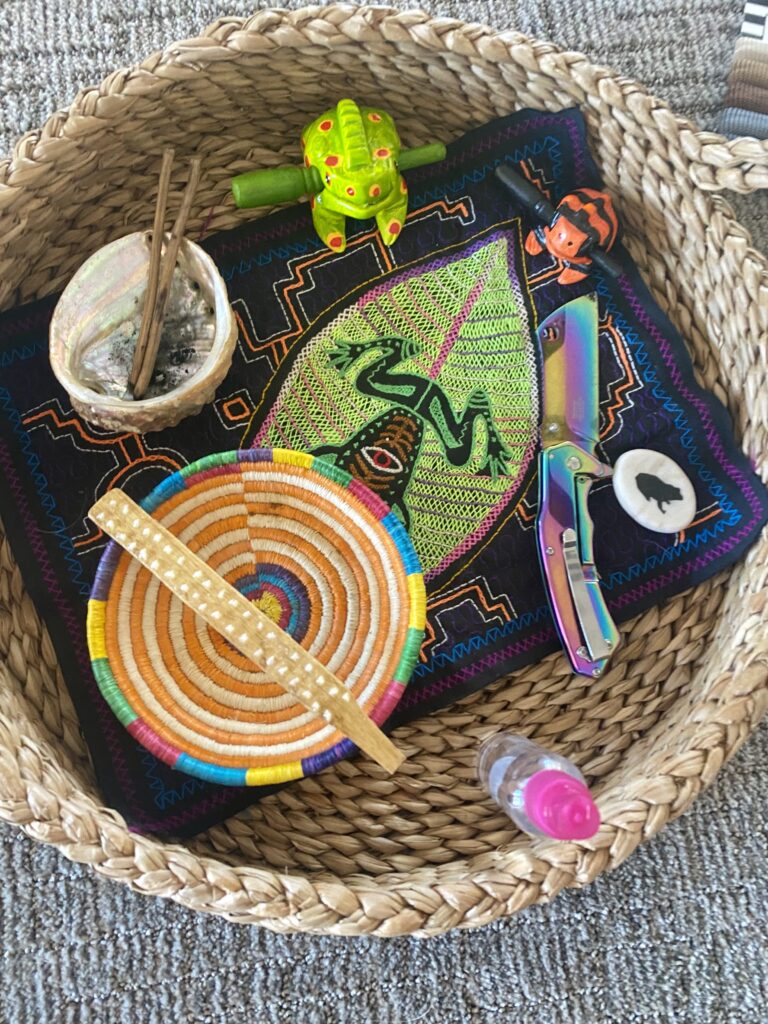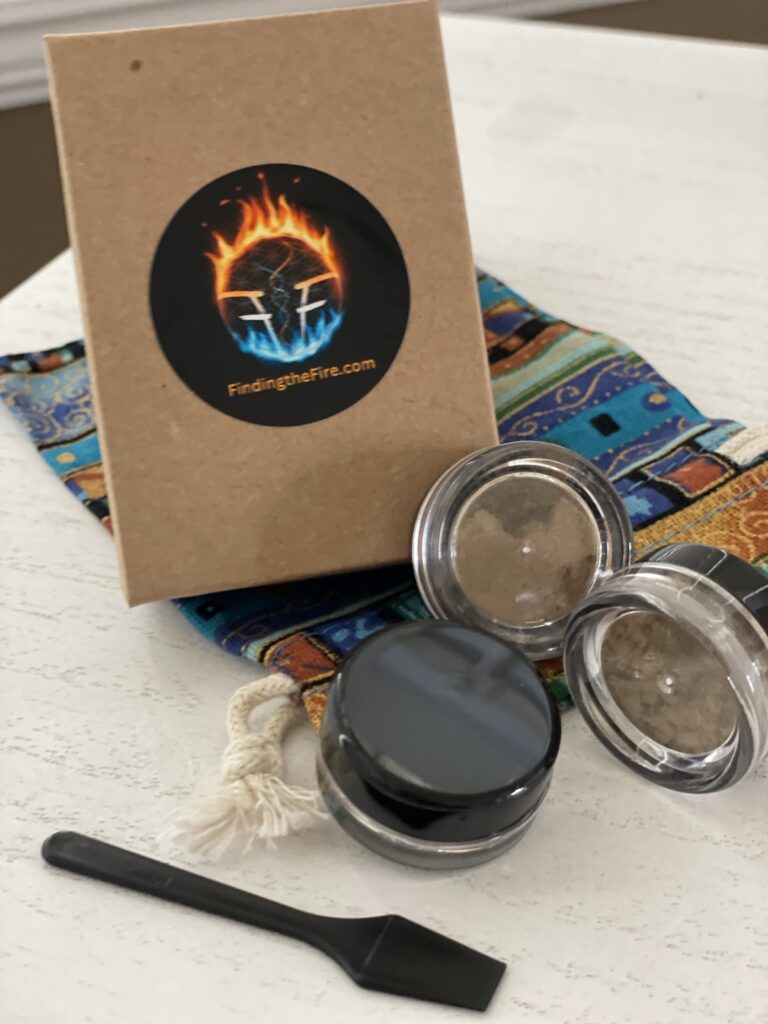
Sacred Amazon plant medicine refers to a variety of traditional plant-based medicines that have been used for centuries by indigenous cultures in the Amazon rainforest region. These medicines are believed to have healing properties that can help individuals on physical, emotional, and spiritual levels.
“After the devastating losses of my son and husband, I found myself in a constant state of fight-or-flight, bracing for the next tragedy. I became adept at navigating chaos, always putting out fires. However, I struggled with slowing down and allowing myself to feel the grief and loss. I feared that fully experiencing these emotions would be too overwhelming and I wouldn’t be able to cope.
That all changed when I discovered plant medicine. With the help of nature’s healing powers, I was able to confront my emotions, sit with them, and release their hold on me. This allowed me to regain control of my life and experience joy once again. As they say, “You have to feel it to heal it.” Plant medicine gave me the courage to do just that.”
-Kambô, also known as the “frog medicine,” is a secretion from the skin of the giant monkey frog that is used in traditional medicine to promote physical and mental well-being. It is typically applied to small burn marks on the skin, which allows the medicine to be absorbed into the body.
-Cacao, or raw chocolate, has been used by indigenous cultures for ceremonial and medicinal purposes for thousands of years. It is believed to have heart-opening properties and can promote feelings of well-being and connection.
-Hapé, also known as “rapé/rapeh,” is a snuff traditionally made from powdered tobacco and other plant ingredients that is blown into the nose through a pipe. It is used in traditional medicine for various purposes, including physical and emotional cleansing, as well as for grounding and centering the mind.
-Sananga is an eye drop made from the roots of a shrub that is native to the Amazon rainforest. It is used to clear your pineal gland, opening your third eye and intuition. In traditional medicine it is used to improve vision, treat eye infections, and promote physical and emotional well-being.
*It is important to note that the use of these plant medicines should only be done under the guidance of a trained and experienced practitioner, as with anything there can be potential risks and side effects.
**It is also important to respect the traditions and cultures from which these medicines originate and to use them with intention and reverence.



Kambo, also known as Sapo, is a substance obtained from the secretion of the Giant Monkey Frog (Phyllomedusa bicolor) found in the Amazon rainforest. This secretion contains several bioactive peptides, which are believed to have therapeutic benefits.
Some of the peptides isolated from Kambo and their potential benefits include:
- Phyllomedusin: A potent vasodilator that can increase blood flow and reduce blood pressure. It may also have pain-relieving and anti-inflammatory effects.
- Dermorphin: An opioid-like peptide that can bind to mu-opioid receptors in the brain and spinal cord, producing pain relief and a sense of well-being. It may also have anti-depressant effects.
- Deltorphin: Another opioid-like peptide that can bind to delta-opioid receptors, producing pain relief and sedation.
- Adenoregulin: A peptide that can inhibit the growth of tumors and enhance the immune system’s response to cancer cells.
- Tryptophyllin: A peptide with anti-microbial properties that can help fight bacteria, viruses, and fungi.
- Sauvagine: A peptide that can stimulate the adrenal gland to release corticotropin, a hormone that regulates the body’s response to stress.
Kambô is a traditional Amazonian medicine typically administered through small burns made on the skin and is believed to have a variety of health benefits. The benefits of kambo may include:
- Physical Healing: Kambo is said to have powerful detoxifying properties that can help to cleanse the body of toxins and boost the immune system. It is also believed to have analgesic and anti-inflammatory properties and may be used to treat various physical ailments such as chronic pain, infections, and inflammation.
- Emotional Healing: Kambo is believed to help release emotional blockages and traumas, allowing for greater emotional healing and balance. It can also help to reduce symptoms of anxiety and depression and promote a sense of well-being.
- Spiritual Connection: Kambo is often used in shamanic rituals to help deepen one’s connection to the spiritual realm and gain insights into oneself and the universe.
- Increased Energy: Kambo is said to have a stimulating effect on the body and mind, helping to increase energy levels and combat fatigue.
- Addiction Recovery: Kambo is believed to have the ability to help reduce cravings and support addiction recovery, although more research is needed in this area.
*It is important to note that kambo should only be administered by a trained and experienced practitioner, as it can be a potent and powerful medicine that requires respect and caution. Kambo can have potential side effects and is not recommended for everyone, such as those with certain medical conditions or those who are pregnant or breastfeeding.
Hapé (pronounced ha-PAY) is a sacred shamanic snuff that is made from various plants and herbs, and is used by indigenous communities in South America for medicinal and spiritual purposes. The benefits of hapé are said to vary depending on the specific blend of plants used, as well as the intentions of the person using it. Some potential benefits of hapé may include:
- Spiritual Connection: Hapé is often used in shamanic rituals to connect with the spiritual realm and gain insights into oneself and the universe.
- Increased Awareness: Hapé is believed to enhance one’s sensory awareness and perception, helping to sharpen the senses and provide clarity of mind.
- Emotional Healing: Hapé is sometimes used to help release emotional blockages and traumas, allowing for greater emotional healing and balance.
- Physical Healing: Some types of hapé are believed to have medicinal properties and may be used to treat various physical ailments.
- Cleansing and Purification: Hapé is often used as a form of purification or cleansing, both for the body and the spirit.
*It is important to note that hapé should only be used under the guidance of a trained and experienced shaman or healer, as it can be a potent and powerful tool that requires respect and caution.
Sananga is a sacred plant medicine that has been used for thousands of years by indigenous communities in South America for medicinal and spiritual purposes. It is made from the root bark of the Tabernaemontana undulata plant and is typically used as eye drops. The benefits of sananga may include:
- Vision Improvement: Sananga is believed to have powerful properties that can improve visual acuity, including helping to reduce nearsightedness and astigmatism.
- Physical Healing: Sananga is said to have anti-inflammatory and analgesic properties, and may be used to treat a variety of physical ailments such as headaches, sinus infections, and arthritis.
- Spiritual Connection: Sananga is often used in shamanic ceremonies to help deepen one’s connection to the spiritual realm and gain insights into oneself and the universe.
- Emotional Healing: Sananga is believed to have the ability to help release emotional blockages and traumas, allowing for greater emotional healing and balance.
- Increased Energy: Sananga is said to have a stimulating effect on the body and mind, helping to increase energy levels and combat fatigue.
*As with any plant medicine, it is important to use sananga under the guidance of a trained and experienced practitioner. Sananga can be a powerful and potent medicine that requires respect and caution.
Cacao is a plant native to South America, and its beans are used to make chocolate. Cacao has been used for centuries by indigenous communities for its medicinal and spiritual properties. The benefits of cacao may include:
- Mood Boosting: Cacao contains several compounds that can boost mood, such as theobromine, which has a mild stimulant effect and can promote feelings of well-being and happiness.
- Heart Health: Cacao is high in flavonoids, which are plant-based antioxidants that have been shown to improve heart health by reducing inflammation and lowering blood pressure.
- Cognitive Function: Cacao contains caffeine, which can improve cognitive function and help with focus and concentration.
- Energy Boost: Cacao contains natural stimulants, such as caffeine and theobromine, which can provide an energy boost and help combat fatigue.
- Nutrient Rich: Cacao is a rich source of several important nutrients, such as iron, magnesium, and zinc, which are essential for overall health.
- Skin Health: The antioxidants found in cacao can help protect the skin against free radicals and reduce the signs of aging.
Cacao has been used in various spiritual and ceremonial practices as a heart opener, allowing individuals to connect more deeply with themselves and others. This is due to the presence of several psychoactive compounds found in cacao, such as phenylethylamine (PEA) and anandamide, which are known to have mood-lifting and euphoric effects on the brain.
When consumed in a ceremonial setting, cacao is often used to create a safe and supportive space for individuals to open their hearts and connect with their emotions. It can help to release feelings of anxiety and tension, and create a sense of joy, peace, and love. This can allow individuals to deepen their connection with themselves and others, and to experience a greater sense of unity and oneness.
*It is important to note that cacao ceremonies should be conducted by trained and experienced practitioners in a safe and supportive environment. While cacao is generally considered safe, it can have potential side effects, especially when consumed in large quantities or in combination with certain medications or substances. As with any plant medicine or ceremonial practice, it is important to approach it with respect, intention, and caution.
